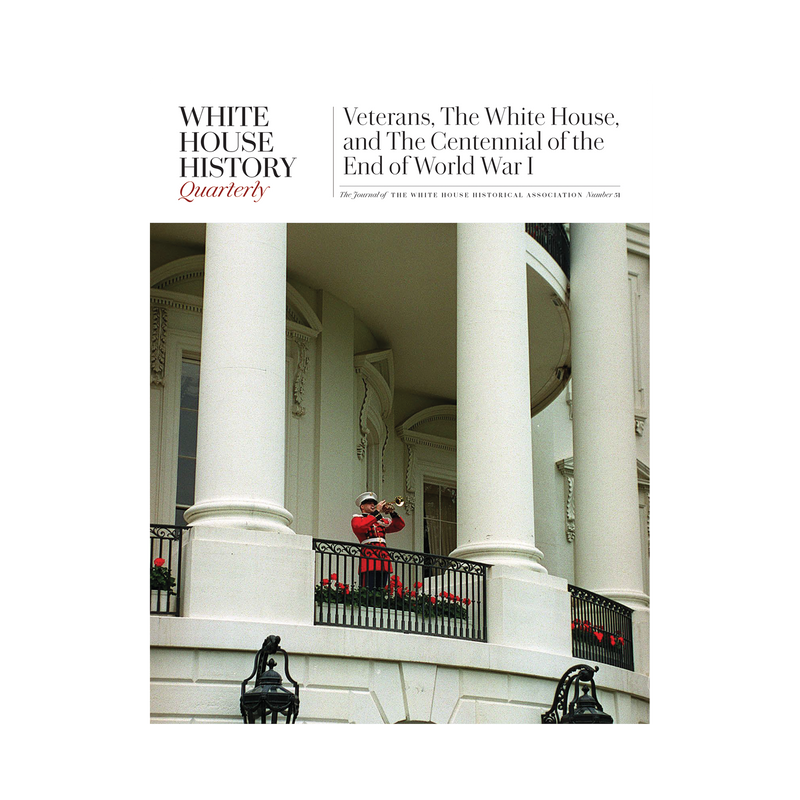Extra 20% off Sale Collection


Additional Information
The close of the World War I on November 11, 1918, ended the first great world war in American history and brought home from the battlefields of Europe more than 2 million veterans. In such a time as a world war the White House claims full attention and a deep hold on Americans. In this issue of White House History Quarterly we mark the Centennial of the end of World War I with articles on President Woodrow Wilson's White House, the events leading up to America's entry into the war, the peace process, and the observance of Veterans Day over the last century. With an excerpt from his newly released book Presidents of War Michael Beschloss recounts the events on April 6, 1917 when war was declared against the German Empire; John Milton Cooper presents a cameo of Woodrow Wilson, the twenty-eighth president; Edward Lengel writes about the war and its influences on the White House; Thomas Boghardt examines the Washington, D.C., espionage scene; Stephen T. Moskey describes President Wilson’s grand and colorful convoy to France to attend the Peace Conference at Versailles; Lydia Tederick presents a portrait of Wilson painted during the Peace Conference at Versailles; and Elyse Werling collects images of veterans at the White House and presidential observations of Veterans Day. With our quarterly Presidential Site Feature with visit Monticello, Montpelier, and Oak Hill as Jonathan Gross reflects on the Marquis de Lafayette’s “Leaving Calls” during his 1824–25 visit to America.
We think less and less about World War I—the Great War—as a century has passed. Some of us remember the red paper poppies given out on Veterans Day, reminiscent of those that bloomed following the battles on Flanders Field, near what became the Belgian Cemetery at Tyne Cot where 368 American veterans are among 11,965 war dead who lie in peace amid rows of poppies.
For more information about our publications, please contact books@whha.org.

